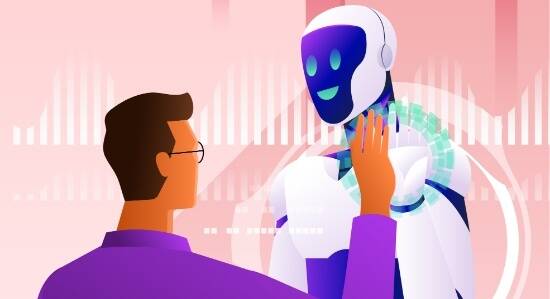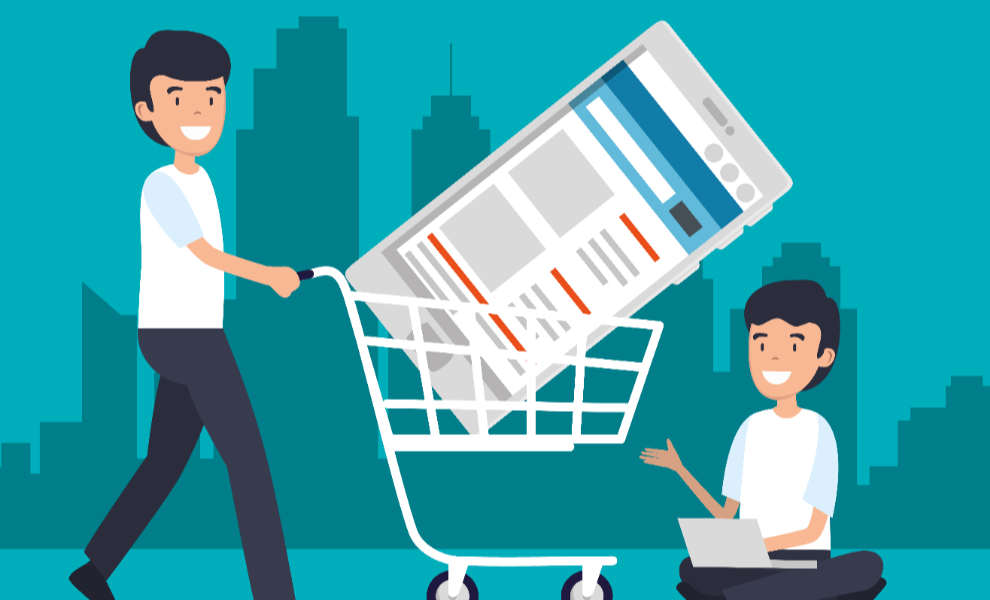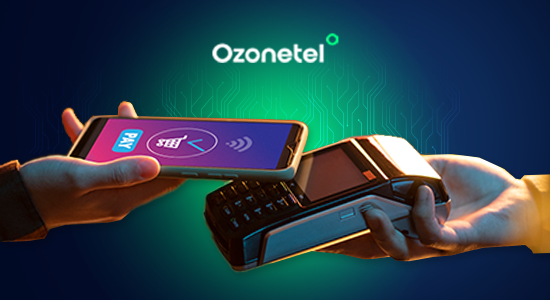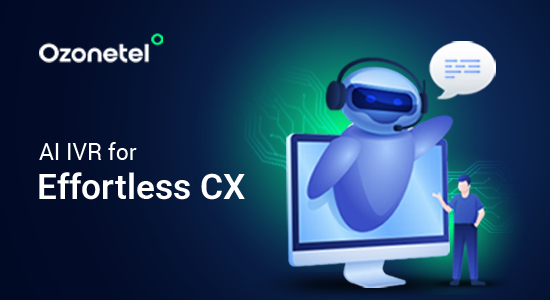- Resources
- What is Customer Lifetime Value? A Comprehensive Guide
What is Customer Lifetime Value? A Comprehensive Guide

Many businesses focus on getting new customers but forget about keeping the ones they already have. This is where Customer Lifetime Value (CLV) steps in!
CLV is a number that shows how much money a customer will likely spend on your business over time. It’s not just about one sale – it’s about all the sales you could make to that customer in the future. Why does this matter? Because it costs way less to keep a customer than to find a new one.
But here’s the problem – many businesses don’t know how to figure out their CLV. In fact, 42% of companies have trouble measuring it accurately. But you don’t have to be one of those companies. Why? Because this guide includes everything you need to know about CLV, including why it’s important and how you can boost this in your organization. So, read along!
In this article, we will explore:
- 1. Customer Lifetime Value Meaning
- 2. Customer lifetime value (CLV) vs. Lifetime value (LTV)
- 3. Importance of Customer Lifetime Value
- 4. Types of Customer Lifetime Value Data
- 5. How to Calculate Customer Lifetime Value (CLTV)
- 6. Examples of Customer Lifetime Value
- 7. Strategies to Enhance Customer Lifetime Value
- 8. Customer Lifetime Value Metrics
Customer Lifetime Value Meaning
Customer Lifetime Value (CLV) measures the total profit your company can expect to generate from an average customer throughout their entire relationship with you.
When a new customer makes their first purchase, that’s just the start of their journey with your brand. The real value lies in nurturing that relationship, so they keep coming back for more. CLV helps you quantify the potential revenue stream from each customer, considering not just their initial purchase but also any repeat buys down the line.
So why is CLV so important? Well, it gives you powerful insights into customer loyalty and satisfaction levels. A high CLV typically indicates happy, engaged customers who love what you’re offering. Armed with this knowledge, you can double down on strategies that keep your best customers coming back for more.
But CLV isn’t just about numbers – it’s also a tool for smart budget planning. Once you know a customer’s lifetime value, you can determine how much you’re willing to invest in acquiring and retaining them without going into the red.
Customer lifetime value (CLV) vs. Lifetime value (LTV)
While CLV and LTV essentially refer to the same concept – the total revenue a customer will generate for a business over the course of their relationship – there is a degree of differentiation in terms of specificity. Let’s understand this in more detail:
| Aspect | Customer Lifetime Value (CLV) | Lifetime Value (LTV) |
|---|---|---|
| Focus | Individual customer | Entire customer base |
| Calculation Basis | Value derived from a single customer | Average value derived from all customers |
| Usage | Tailoring marketing and retention strategies for specific customers | Assessing overall business health and forecasting revenue |
| Detail Level | Granular, customer-specific insights | Aggregated, broad insights |
| Application | Personalized marketing, customer segmentation | Strategic planning, financial modeling |
Importance of Customer Lifetime Value

CLV represents the total revenue you can expect from a customer over the entire course of your relationship – and it offers insights that can transform how you acquire, retain, and delight your audience. So, let’s understand the importance of CLV in a little more detail:
Measures Impact of Marketing Efforts
Ever wondered whether that big marketing campaign was really worth the investment? With CLV, you can directly measure the financial impact and ensure your initiatives are delivering real value. In fact, 81% of marketers agree that monitoring CLV boosts sales. It’s like having a crystal ball to validate your return on your investment.
Identifies Your Best Customers
Some customers are simply more valuable than others. CLV lets you pinpoint these high-stakes segments that drive maximum profits, so you can double down on keeping them loyal. What do these high-value customers have in common? Once you understand their needs and behaviors, you can replicate that success across your entire audience.
Improves Customer Retention Strategies
The probability of selling to an existing customer is 60-70%, compared to just 5-20% for a new prospect – sounds too good to be true, right? With CLV insights, you can invest more into retaining your current fan base through smart loyalty programs, better customer support, and targeted promotions at key renewal periods. It’s all about nurturing those lucrative repeat buyers.
Maximizes Marketing ROI
When you know a customer’s lifetime value, you can determine the optimal amount to invest in acquiring them – without going over budget. Instead of blowing your entire acquisition budget on costly one-time shoppers, you can adjust your spending to attract more of those high-value, brand-loyal customers that sustain long-term growth.
Guides Product Development
When you know which customers bring the most value over time, you can dig deeper into their needs, preferences, and pain points. And this insight shapes your product roadmap, driving innovation in ways that truly matter to your most valuable customers. For instance, if you notice that customers with the highest CLV tend to use a particular feature more often, you might invest in enhancing that feature or developing related products. Or, if you find that high-CLV customers often request specific functionality, you can prioritize its development.
Types of Customer Lifetime Value Data
When it comes to measuring customer lifetime value, companies have various models at their disposal. The model a business chooses to employ can result in different outcomes, as each approach serves a distinct purpose. Let’s take a better look at these:
- Historical CLV Data: This shows you what customers have done in the past. It reveals how much they’ve spent and how they’ve interacted with your brand.
- Predictive CLV Data: This uses advanced calculations to estimate future customer behavior. It helps you plan by showing potential spending patterns and customer longevity.
- Individual CLV: This focuses on each customer separately – you’ll see how valuable each person is to your business. It’s useful for identifying your most important customers.
- Lifespan CLV: This estimates how long customers will continue buying from you. It helps you understand the total value a customer might bring over their entire relationship with your company.
- Cohort Analysis CLV: This categorizes customers based on when they first bought from you. It shows you how different groups behave over time, helping you spot trends you’d miss by looking at all the customers together.
- Customer Segment CLV: This groups similar customers together, showing you which type of customers are most valuable to your business. You can use this to focus your efforts on the most profitable customer groups.
How to Calculate Customer Lifetime Value (CLTV)
CLV combines a few crucial data points – the value of each purchase, the frequency of purchases, and the typical length of the customer relationship. Let’s break it down with a simple example:
Imagine you run a retail clothing store. Your typical customer spends $75 per purchase and treats themselves to new gear 4 times per year. If your average customer sticks around for 3 years, the CLV calculation would look like this:
Customer Value = Average Purchase Value X Average Purchase Frequency
= $75 x 4 = $300 per year
Customer Lifetime Value = Customer Value x Average Customer Lifespan
= $300 x 3 years = $900
So based on these assumptions, you could reasonably expect $900 in total profit from your average customer over the 3-year relationship.
But what if your business model is more complex, with fluctuating costs and customer churn rates to consider? Well, there are more advanced CLV formulas that account for variables like gross margins and customer acquisition costs. The general approach is:
= (Avg Purchase Value X Purchase Frequency x Gross Margin x Customer Lifespan) – CAC
Examples of Customer Lifetime Value
Now, it’s time to see some real-world brands putting these strategies into action. These examples showcase how businesses across industries can leverage CLV to build stronger relationships and drive sustainable growth. Let’s dive in!
Super Hair Pieces
Super Hair Pieces, a direct-to-consumer hair piece store, has built a loyal following of repeat customers by focusing on delivering great products at affordable prices. Their strategy revolves around maximizing customer lifetime value by encouraging customer retention and referrals through a well-designed loyalty program.
They implemented a loyalty program that offers points and rewards, passing on the savings from their lean business model directly to customers. This approach has paid off handsomely, as a healthy portion of their customer base now consists of loyal, repeat buyers – all without the need for major marketing campaigns.

By providing lower prices and incentivizing customers to keep coming back, Super Hair Pieces has tapped into the power of social proof and word-of-mouth marketing. As the stats suggest, people are four times more likely to buy a product when recommended by a friend and 67% of consumers modify their brand choices to maximize rewards and points.
Netflix
Netflix, the leading streaming platform, has built a loyal customer base by continuously innovating and adapting to customer needs. With an average subscriber staying on board for 25 months and a lifetime value of $291.25 per customer, Netflix understands the importance of maximizing CLV through strategic moves.
One key challenge Netflix faced was customer impatience and churn due to the wait times for physical DVD deliveries. By analyzing customer behavior and tracking statistics, Netflix recognized that a 4% churn rate was a significant risk to their business.
To address this issue, Netflix introduced a game-changing feature: streaming movies directly on the web. This innovation not only satisfied customers’ immediate movie cravings but also kept them engaged while waiting for physical DVDs, ultimately reducing churn to a manageable level.

Apple
Apple, known for its exceptional customer experiences, uses Net Promoter Score (NPS) surveys to gauge customer satisfaction and identify areas for improvement. Through NPS surveys, Apple measures the likelihood of customers recommending their products and services to friends and family. These surveys are sent out after customers make a purchase or schedule an appointment at the Genius Bar, providing Apple with valuable insights into fundamental customer interactions.

By carefully analyzing the feedback from both promoters (highly satisfied customers) and detractors (dissatisfied customers), Apple gains a deep understanding of what drives customer loyalty and what areas need improvement. This feedback loop allows Apple to continuously refine and enhance the in-store experiences, ensuring that customers remain satisfied and engaged throughout their journey with the brand.
Costco
Costco, the renowned membership-based retailer, has achieved significant success in maximizing CLV through ingenious strategies that prioritize customer satisfaction and loyalty. One of Costco’s key strategies is to offer a curated selection of products in each store, typically around 5,000 SKUs.
By stocking fewer items and quickly removing underperforming products, Costco ensures that their shelves are constantly refreshed with high-demand merchandise. This approach not only optimizes inventory management but also creates a sense of exclusivity and urgency for customers, encouraging them to make purchases during their visits.
Additionally, Costco goes above and beyond to enhance the overall shopping experience for its members. They offer perks like low-priced lunch fare, in-store product demonstrations, and samples, all of which contribute to customer satisfaction and create a welcoming environment that keeps shoppers engaged and coming back.

Lyft
Lyft makes booking a ride as easy as pie – you can hail a car through Facebook Messenger, Slack, or even by asking Alexa. This frictionless experience captures customers right when they need a ride, increasing the chances they’ll choose Lyft over competitors.
But it doesn’t stop there. Lyft also prioritizes the human touch, with a two-way rating system that keeps both drivers and passengers accountable. Moreover, they’re constantly fine-tuning the customer experience. By using metrics like Net Promoter Score and Customer Satisfaction surveys, Lyft identifies what’s working and what needs improvement.

Strategies to Enhance Customer Lifetime Value

Who doesn’t love feeling valued? Loyalty programs incentivize your most dedicated customers to stick around by offering exclusive perks like points, discounts, free gifts, and more. According to one report, 80% of companies achieved a positive ROI from their loyalty initiatives, earning an average of 4.9 times more revenue than their expenses. Additionally, 89% of customers reported that these programs help alleviate inflation concerns.
A few other ways to boost CLV are:
Personalize Marketing Efforts
Generic, one-size-fits-all marketing just doesn’t cut it anymore. Customers expect personalized experiences, with 54% wanting recommendations based on previous purchases and 45% hoping for back-in-stock notifications on favored items. By tapping into customer data and preferences, you can delight buyers with tailored communications and product suggestions that boost engagement and sales.
Leverage Customer Feedback
What do your customers really think about your brand? The majority feel that customer feedback influences their purchasing decisions. Implement user-friendly feedback tools like survey apps to gather invaluable insights into what’s working well and where you can improve. This direct line to your audience’s needs enables you to refine your products and services for maximum satisfaction – a key driver of CLV.
Deliver Exceptional Customer Service
Poor customer service is a surefire way to lose loyal buyers. In fact, 36% of customers say great support motivates them to recommend a brand online. Identify the preferred support channels (live chat, social media, self-service knowledge bases, etc.) and invest in providing lightning-fast, personalized assistance. Delivering on customer service cements your reputation and keeps buyers coming back.
Calculate Customer Acquisition Cost (CAC)
Before you can truly optimize CLV, you need to understand your customer acquisition costs. The formula for calculating this is:
CAC = (Marketing Costs + Sales Costs + Wages + Overhead) / New Customers Acquired
Monitoring this metric regularly reveals the effectiveness of your marketing efforts and return on investment. Lowering CAC can simultaneously increase CLV, so getting a handle on those acquisition expenses is crucial.
Utilize Cross-Selling and Upselling
Don’t miss out on opportunities to increase order values and introduce customers to your full product range. Cross-selling involves suggesting complementary products (like fries with a burger), while upselling encourages customers to upgrade to a premium version.
Both strategies can significantly boost your average order value and, in turn, CLV. For instance, a fast-food restaurant might see a substantial increase in revenue by simply asking, “Would you like fries with that?” Similarly, an airline offering seat selection for a fee is a classic upsell.
Build a Strong Community
Encourage customers to interact on social media, share reviews and photos, and use branded hashtags. You can also consider creating exclusive groups or forums where customers can connect, share advice, and discuss your products.
For example, a fitness brand might create a community where members share workout tips and progress photos. This approach not only increases customer engagement but also provides valuable user-generated content and peer-to-peer support, reducing the strain on your customer service resources.
Customer Lifetime Value Metrics
Customer Lifetime Value metrics are a set of calculations that help businesses understand the long-term value of their customers. In simple terms, CLV is the total revenue a customer will generate for your company over the course of their relationship with your brand. But how do you measure it? That’s where CLV Metrics come into play.
Let’s start with a basic understanding of these metrics:
Average Purchase Value
This metric calculates the average amount of money a customer spends on your products or services per purchase. The formula is:
Average Purchase Value = Total Revenue in a Period / Number of Purchases in the Same Period
Knowing your average purchase value can reveal opportunities to increase transaction values through upselling, cross-selling, or adjusting your pricing strategies. Aren’t insights like these invaluable for growing your business?
Average Purchase Frequency Rate
While average purchase value tells you how much customers spend, the average purchase frequency rate shows you how often they make purchases. It’s calculated as:
Average Purchase Frequency Rate = Number of Purchases / Number of Unique Customers
A high purchase frequency rate indicates customer engagement and loyalty, which are key drivers of revenue growth. Doesn’t that make you curious about your own rate?
Customer Value
Now, let’s combine the two metrics above to find the customer value:
Customer Value = Average Purchase Value X Average Purchase Frequency Rate
Customer value is a powerful metric that helps you identify your most valuable customers and segment them for targeted strategies. After all, keeping your high-value customers happy should be a top priority, right?
Average Customer Lifespan
This metric calculates the average duration a customer remains active with your business. The formula is:
Average Customer Lifespan = Sum of Customer Lifespans / Total Number of Customers
Knowing your average customer lifespan allows you to predict future revenue streams and plan customer retention strategies accordingly. Wouldn’t you want to ensure your customers stick around for the long haul?
Customer Acquisition Cost (CAC)
While not directly part of the CLV calculation, CAC is a useful metric to analyze alongside CLV. It represents the cost of acquiring a new customer through marketing and sales efforts. Comparing CAC to CLV can reveal the effectiveness of your customer acquisition strategies and help optimize resource allocation.
Conclusion
The bottom line? Calculating your CLV isn’t just a nice-to-have; it’s essential for maximizing customer relationships, allocating smart investments, and driving sustainable revenue. However, it’s important to remember that you don’t need to stress about intricate calculations. The primary focus should be on understanding the overall value a customer brings to your business throughout their lifetime relationship.
Also, leveraging solutions like Ozonetel’s AI-powered omnichannel platform can significantly aid in improving customer lifetime value. With its comprehensive suite of tools, including Speech Analytics, Conversational AI, and advanced performance insights, Ozonetel empowers businesses to deliver exceptional customer experiences across all touchpoints.
Want to see what Ozonetel can do for your company? Sign up today for a free 7-day trial.
Prashanth Kancherla
Chief Operating Officer, Ozonetel Communications
Over the past decade, Prashanth has worked with 3000+ customer experience and contact center leaders...
Chief Operating Officer, Ozonetel Communications
Over the past decade, Prashanth has worked with 3000+ customer experience and contact center leaders to comprehensively understand the need for effective and efficient customer communications at every step of their journey with a brand. Deeply embedded in today’s CCaaS ecosystem, he has been instrumental in Ozonetel's growth and contributed in various roles including product management, sales, and solution architecture.







